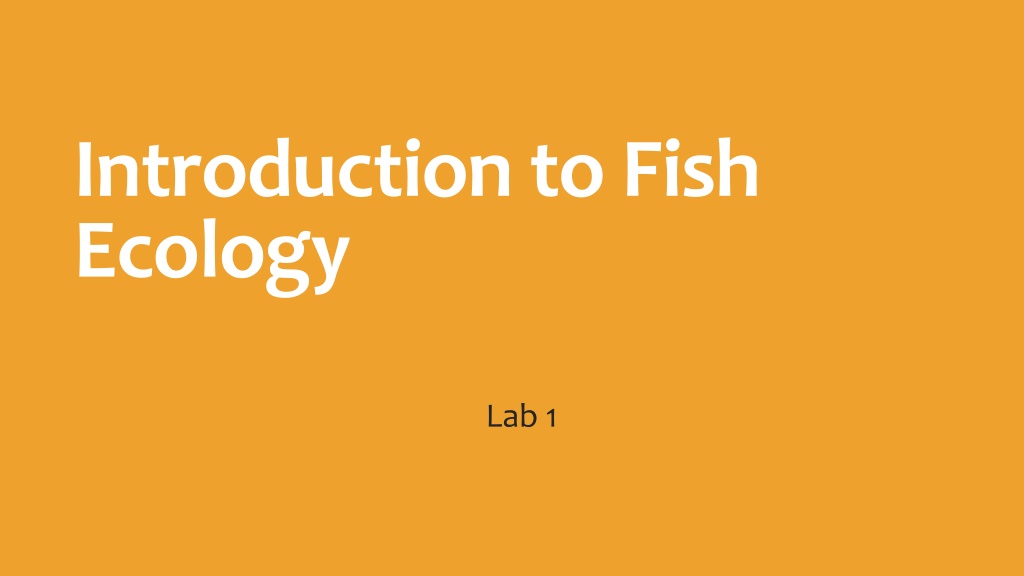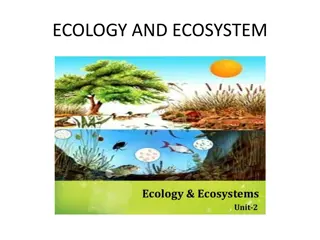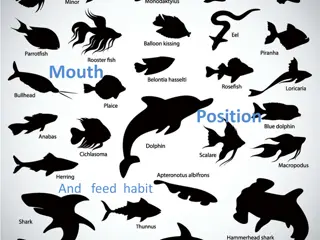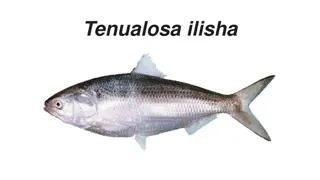Understanding Fish Ecology: Interactions, Diversity, and Environmental Factors
Fish ecology involves studying the distribution, interactions, and abundance of fish species in different ecosystems. This lab delves into the divisions of ecology, fish species diversity in marine and freshwater ecosystems, and the environmental factors affecting fish diversity and abundance. Discover the significance of fish in aquatic ecosystems and their roles in providing food, economic opportunities, and recreation.
Download Presentation

Please find below an Image/Link to download the presentation.
The content on the website is provided AS IS for your information and personal use only. It may not be sold, licensed, or shared on other websites without obtaining consent from the author. Download presentation by click this link. If you encounter any issues during the download, it is possible that the publisher has removed the file from their server.
E N D
Presentation Transcript
Introduction to Fish Ecology Lab 1
Fish Ecology: is the study of the processes influencing the distribution and abundance of fishes, the interactions among fishes, and the interactions between fishes with their environment.
Divisions of Ecology: - Auto-ecology or species ecology: the study of individual species, i.e. behaviour, adaptation and interaction of a species in its environment. - Synecology or community ecology: the study of communities and their environment. interaction with the
A fish: Fish are gill-bearing aquatic animals that lack limbs with digits. Included in this definition are the living hagfish: 1- lampreys and Hagh fishes. 2- cartilaginous, and 3- bony fish. As well as various extinct related groups.
Fishspeciesdiversityisdividedinto: 1- Marine (Oceanic) ecosystem: 70% of the earth covered by salt water, and 58% of all Fish species are marine, 2- Fresh water ecosystem: 1% freshwater of all water bodies, and 41% of fishes are freshwater fishes, 3- Both Diadromes, Euryhaline: moving regularly between ocean and freshwater systems, only 1% of fishes are of this group. Marine biodiversity generally higher than freshwater. Fish are very different in appearance, size and shape. This all depends on the environmental factors that it lives in.
Environmental factors that effect on Fish Diversity and Abundance: 1- Abiotic components: which including:- - Climatic factors: like temperature, Oxygen, light level and water. - Edaphic or soil factors: like mineral matter, salinity, organic matter. 2- Biotic components: which including:- - Producers (autotrophs or self-feeders): like green plants that having chlorophyll and producing food by photosynthesis. - Consumers (heterotrophs): like all living organisms do not have chlorophyll, for example Human, birds etc. - Decomposers (saprotrophs): mainly include bacteria and fungi that make disease for fish in polluted water Fish play an important role in aquatic ecosystems and have long provided food, employment, business opportunities, and recreation.























